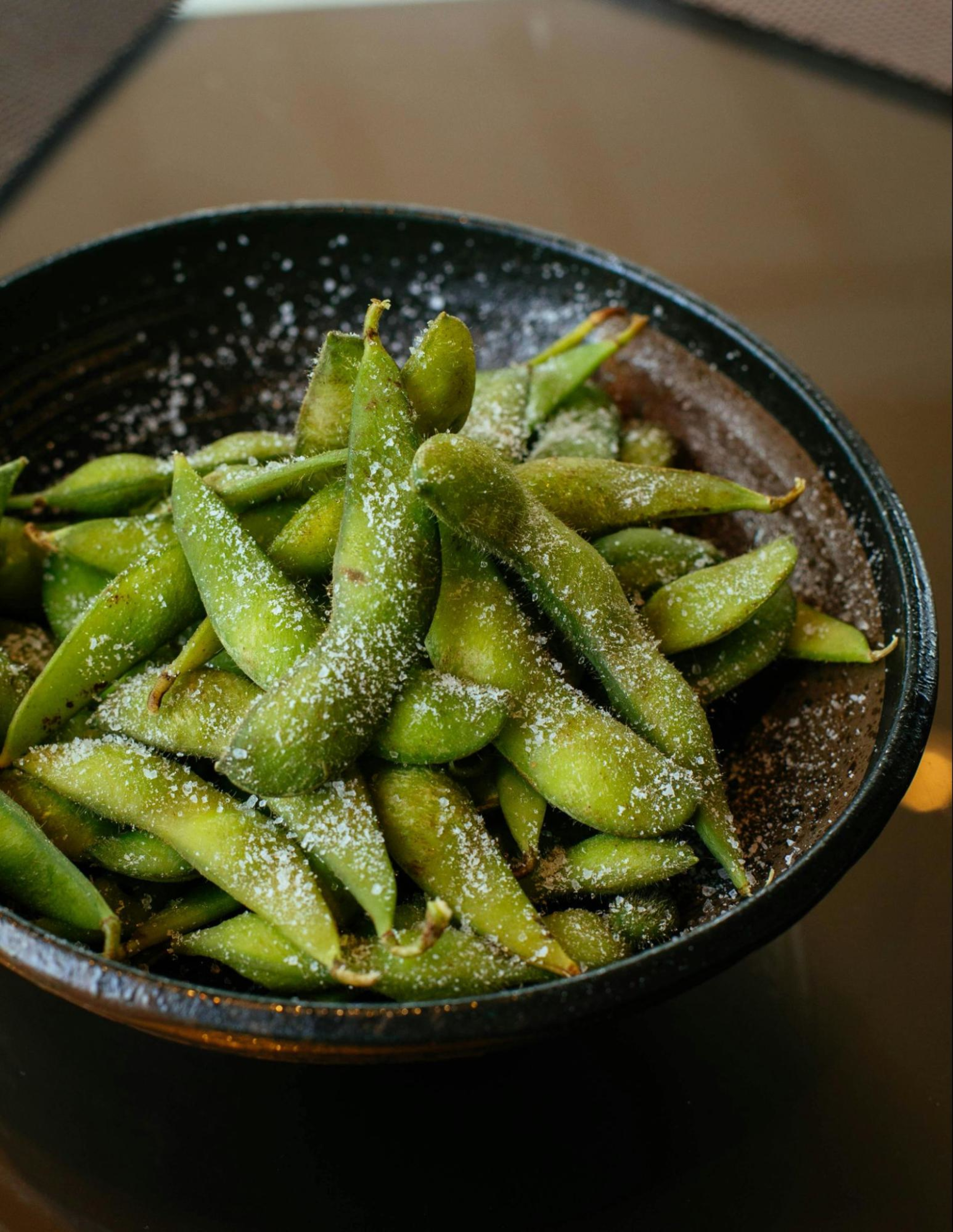25 Foods High in Fiber to Support Your Digestive Health

Dietary fiber—often just called “fiber”—can be found in a variety of foods and offers a range of health benefits. Fiber is a type of carbohydrate the body cannot fully digest, and as it passes through the digestive system, it provides a number of benefits to digestive health in particular.
If you’re interested in learning more about incorporating fiber into your diet, read on to learn about:
Let’s get started!
The two different types of dietary fiber
1. Soluble fiber
Called “soluble” because of its ability to dissolve in water, this type of fiber forms something like a gel that can slow down your digestion. This is a good thing, as it allows the digestive machinery of the GI tract to do its job and extract more nutrients from the food you eat.
This action can also positively impact blood sugar and cholesterol levels (which we’ll dive into more later!). Soluble fiber can be found in oats, beans, and certain fruits, such as apple and citrus.
2. Insoluble fiber
Unlike soluble fiber, insoluble fiber does not dissolve in water. Instead, its passage through the digestive system can help move food properly through the GI tract. Insoluble fiber adds bulk to the stool, promoting regular bowel movements and preventing constipation.
Insoluble fiber can be found in whole grains, nuts, and many vegetables.
The health benefits of dietary fiber
Fiber supports optimal health in the following ways:
1. Digestive health
Soluble fiber can promote a healthier microbiome by feeding populations of beneficial gut bacteria. Having a more balanced microbiome can in turn improve nutrient absorption and support immune health.
2. Weight management
Foods rich in fiber are more satiating, meaning they make you feel fuller for longer. The addition of fiber often slows down the time it takes to eat a given food, as well as activating the stretch receptors in the gut that signal satiety (fullness) to your brain.
For example, compare a tall glass of orange juice with the equivalent number of whole oranges. The fiber in the oranges will slow you down and make you feel full in a way the orange juice will not.
If you are trying to create a caloric deficit for weight loss, working with your hunger cues instead of against them is a smart move.
Related blog: Is Diet More Important Than Exercise?
3. Blood sugar management
When you eat carbohydrates, they get broken down into glucose and enter the bloodstream to be delivered throughout the body as energy. Some carbohydrates are more rapidly absorbing and can spike blood sugar in a problematic way—which over time, can lead to problems in overall blood sugar regulation.
Including fiber alongside rapid-acting carbohydrates can blunt this spike in blood sugar by slowing down the overall digestive process.
4. Heart health
Soluble fiber in particular can help to lower of LDL cholesterol through several mechanisms:
Fiber binds to bile acids in the digestive tract, preventing these cholesterol-rich acids from being reabsorbed and recirculated.
The improvements to digestion from fiber intake slows the rate at which cholesterol found in food is absorbed into the bloodstream.
Eating fiber promotes the growth of beneficial gut bacteria, which produce short-chain fatty acids that inhibit cholesterol production from the liver.
Overall, focusing on fiber is an effective, drug-free way to improve your cholesterol levels.

Did you know?
Over 90% of Hydrow members are still active one year later.
25 high-fiber foods to add to your diet
Looking for more ways to add fiber into your diet? Here is a list of 25 foods that are good sources of dietary fiber, along with other key nutrients they contain and suggestions for how to prepare them.
1. Lentils
Fiber: 15.6g/cup cooked
Also a good source of: Protein
Preparation: Make a lentil soup or stew with carrots, celery, and spices.
2. Chickpeas
Fiber: 12.5g/cup cooked
Also a good source of: Folate
Preparation: Roast with olive oil and spices for a crunchy snack.
3. Black beans
Fiber: 15g/cup cooked
Also a good source of: Iron
Preparation: Add to salads or make a black bean chili.
4. Oats
Fiber: 4g/cup cooked
Also a good source of: Beta-glucan
Preparation: Prepare as overnight oats with fruits and nuts.
5. Chia seeds
Fiber: 10g/ounce
Also a good source of: Omega-3 fatty acids
Preparation: Make a chia pudding by soaking in milk overnight.
6. Quinoa
Fiber: 5.2g/cup cooked
Also a good source of: Magnesium
Preparation: Use as a base for a grain bowl with vegetables and protein.
7. Sweet potatoes
Fiber: 4g/medium potato
Also a good source of: Vitamin A
Preparation: Bake with cinnamon and a drizzle of olive oil.
8. Avocado
Fiber: 10g/avocado
Also a good source of: Monounsaturated fat
Preparation: Add slices to salads or make guacamole.
Related blog: The Ultimate Guide to Meal Planning
9. Broccoli
Fiber: 2.4g/cup cooked)
Also a good source of: Vitamin C
Preparation: Steam or roast with garlic and olive oil.
10. Almonds
Fiber: 3.5g/ounce
Also a good source of: Vitamin E
Preparation: Enjoy as a snack or add to yogurt.
11. Brussels sprouts
Fiber: 3.3g/cup cooked
Also a good source of: Vitamin K
Preparation: Roast with balsamic vinegar and olive oil.
12. Flaxseeds
Fiber: 2.8g/tablespoon
Also a good source of: Lignans
Preparation: Sprinkle ground flaxseeds on oatmeal or yogurt.
13. Pears
Fiber: 5.5g/medium pear
Also a good source of: Vitamin C
Preparation: Slice and enjoy as a fresh snack or add to salads.
14. Carrots
Fiber: 3.6g/cup
Also a good source of: Beta-carotene
Preparation: Roast with herbs or eat raw with hummus.
15. Apples
Fiber: 4.4g/medium apple
Also a good source of: Vitamin C
Preparation: Slice and add to salads or eat raw with nut butter.
16. Barley
Fiber: 6g/cup cooked
Also a good source of: B vitamins
Preparation: Stir into soups or stews for added texture.
17. Raspberries
Fiber: 8g/cup
Also a good source of: Antioxidants
Preparation: Add to smoothies or sprinkle on cereal.
18. Oranges
Fiber: 3.1g/medium orange
Also a good source of: Vitamin C
Preparation: Peel and eat as a refreshing snack.
19. Bananas
Fiber: 3.1g/medium banana
Also a good source of: Potassium
Preparation: Slice into oatmeal or blend in a smoothie.
20. Spinach
Fiber: 2.4g/cup cooked
Also a good source of: Iron
Preparation: Sauté with garlic or add to soups.
21. Pumpkin
Fiber: 7g/cup cooked
Also a good source of: Vitamin A
Preparation: Make a creamy pumpkin soup or add to baked goods.
22. Edamame
Fiber: 8g/cup
Also a good source of: Protein
Preparation: Steam and sprinkle with a pinch of sea salt.
23. Artichokes
Fiber: 7g/medium artichoke
Also a good source of: Folate
Preparation: Steam and dip the leaves in garlic aioli.
24. Peas
Fiber: 8.8g/cup
Also a good source of: Vitamin K
Preparation: Add to salads or make pea soup.
25. Brown rice
Fiber: 3.5g/cup cooked
Also a good source of: Manganese
Preparation: Serve as a side dish or add to stir-fries.
Incorporating a variety of these foods high in fiber can help to support a number of health goals beyond just improved digestive health. Fiber-rich foods also provide essential vitamins, minerals, and other nutrients for a balanced diet that supports blood sugar management, heart health, and maintaining an optimal weight.

Explore Hydrow’s library of 5,000+ rowing, circuit training, yoga, Pilates, and mobility workouts.






